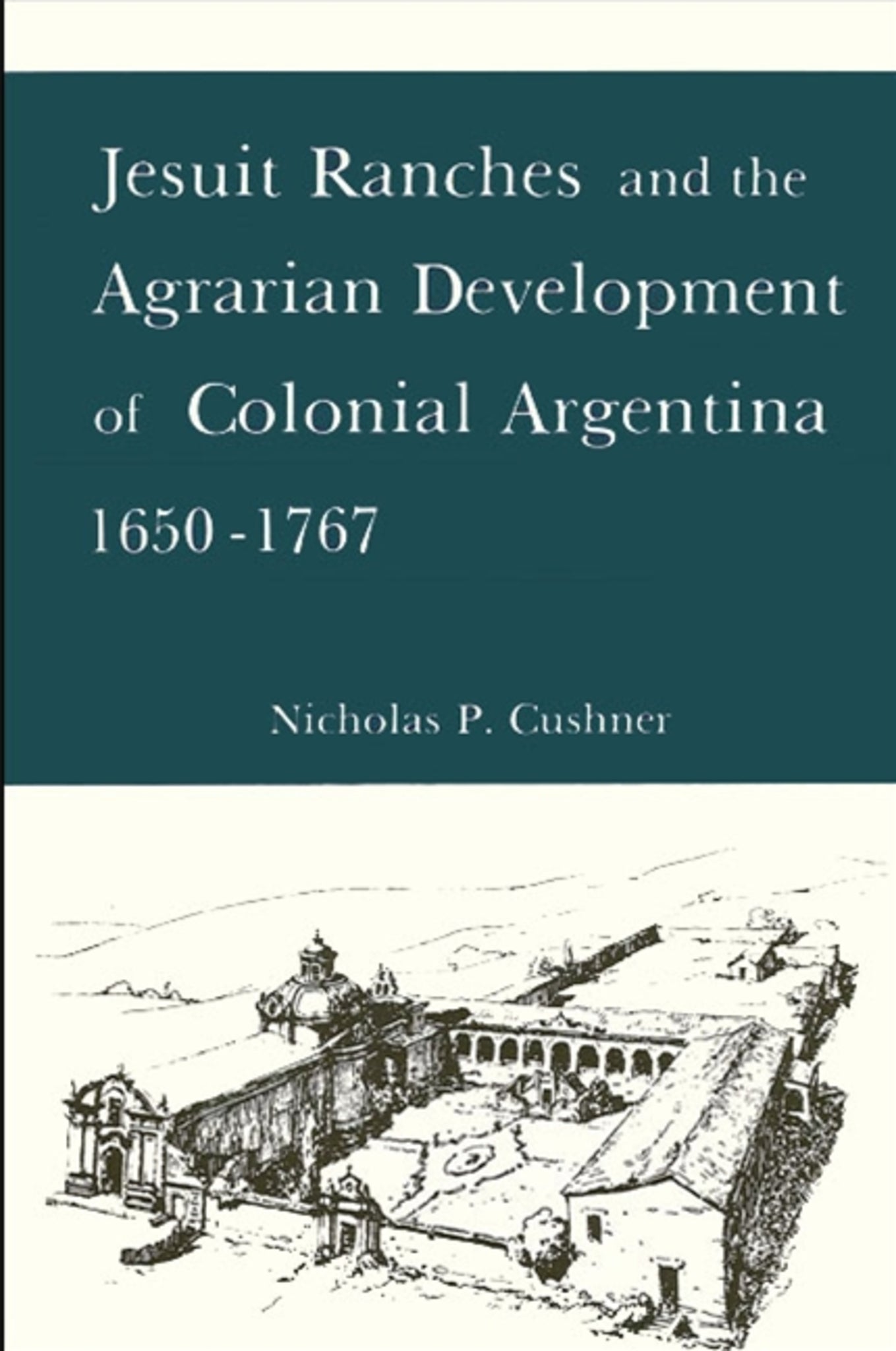We're sorry. An error has occurred
Please cancel or retry.
Jesuit Ranches and the Agrarian Development of Colonial Argentina, 1650-1767

Some error occured while loading the Quick View. Please close the Quick View and try reloading the page.
Couldn't load pickup availability
- Format:
-
30 June 1984

Jesuit Ranches and the Agrarian Development of Colonial Argentina, 1650-1767, is the last book in a trilogy that examines Jesuit economic activity in three major geographic regions of colonial Spanish America. The first, Lords of the Land, focuses on Jesuit sugar and wine production on the Peruvian coast, primarily from the viewpoint of the agricultural geographer. The second, Farm and Factory, examines the complex of Jesuit farm, wool, and textile production in Interandine Ecuador insofar as it contributed to the beginnings of agrarian capitalism in Latin America.
This book examines the agro-pastoral development of colonial Argentina, primarily Tucumán, its farms, its ranches, and its trade connections with Alto Peru. Three major geographical regions are thus studied, each specializing in a distinct complex of economic enterprises, but each linked by trade routes that crossed snowy mountains and traversed barren deserts.


"This book brings a wealth of important information on a topic never treated before" — Susan M. Socolow, Emory University.
"Cushner culls intimate information about important rural production from the account books and letters of agricultural estates. The sources are among the most informative available for any period of Latin American history—even for today—that I have seen. This is scholarship at its best." — Jonathan C. Brown, Northern Illinois University.
List of Illustrations and Tables
Preface
List of Abbreviations
Introduction
1. The Lay of the Land
The physical environment
Acquisition of land
Jesuit lands
Distribution of farm/ranch units
Lawsuits and litigation
2. Farmsteads and Ranches
The structures
Construction materials
Enterprises
Organization and management
World vision and commercial venture
3. The Mule Trade
Mules and donkeys
Jesuit mules
Salta and mule distribution
4. Works and Days: The Functioning Farm
Production
Textile mills
Herds and hides
Rentals and other land uses
Product distribution
Colonial role of ranches and farms
5. Labor: Salaried and Slave
Personal service
Conchabados and peones
Slaves
Labor costs
Criticism and rationale
6. Finance
Accounting methods
Revenue and expenses: Córdoba
Revenue and expenses: the Province and other colleges
Return and reinvestment
7. Credit, Money, and Colonial Trade
Currency and prices
Credit mechanisms
Oficios and the trade network
Controversy
8. Conclusion
Appendix A. The Morality of Business Transactions
Appendix B. Directives to the Office of the Missions on Business Activity, 1738
Notes
Glossary of Spanish Terms
Bibliography
Index



